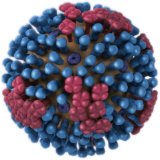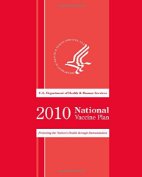By Barbara Loe Fisher
To activate and view hyperlinked references, please click here
once and then click any superscripted number below to access a
hyperlinked reference, or scroll down to the bottom of the article to
view all hyperlinked references
Americans have never been big fans of flu shots. During the 2009 “swine flu” influenza A pandemic, only about 40 percent of adults bothered to roll up their sleeves. 1 Last year, flu vaccine rates were still just 47 percent for adults but pediatricians had vaccinated 75 percent of children under two years old. 2
Perhaps it is because parents are being thrown out of pediatricians’ offices if they don’t give their children every federally recommended vaccine – or maybe it is just because adults can talk about how they felt after getting vaccinated and infants and children under age two cannot.
 How
many times has someone told you: “The year I got a flu shot is the only
year I got sick” or maybe you learned that the hard way yourself after
getting vaccinated.
How
many times has someone told you: “The year I got a flu shot is the only
year I got sick” or maybe you learned that the hard way yourself after
getting vaccinated.Doctors insist that just because we get sick with a fever, headache, body aches and a terrible cough that hangs on for weeks after getting vaccinated, it doesn’t mean the vaccine made us sick. They say it was just a “coincidence” because correlation does not equal causation. 3 4
Well, that may be true some of the time, but now the CDC is admitting that flu shots don’t prevent influenza most of the time. 5 In fact, studies show that a history of seasonal flu shots can even make people more susceptible to getting sick with a fever, headache, body aches and a terrible cough that hangs on for weeks! 6 But just like with pertussis infections, a lot of people also get and transmit influenza infections without showing any symptoms at all. 7 8 9
Previous Flu Shots Raised Risks for Pandemic Flu
During the 2009 swine flu pandemic, scientists in the Netherlands asked a big question: Do annual flu shots preventing natural influenza A infections in infants and young people increase their risk of illness and death when a highly pathogenic pandemic influenza strain develops and circulates? 10 The answer to that big question was “Yes” when, in 2010, Canadian health officials confirmed that school aged children and healthy young adults, who had gotten a flu shot the previous season, were at twice the risk of coming down with pandemic A swine flu in 2009 that was severe enough to require a trip to the doctor’s office. 11Then, between 2011 and 2014, researchers in Europe published a number of studies providing evidence that immune responses to natural influenza infections and vaccinations are quite different, and very much affect the quality and length of immunity. 12
Most People Don’t Show Flu Symptoms, Vaccinated People More Likely to Get Sick
 Here is what they found when they studied the 2009/2010 pandemic flu season:
Here is what they found when they studied the 2009/2010 pandemic flu season:- First, repeated annual flu shots may hamper certain kinds of immune responses, making young vaccinated children, who have never been naturally infected with influenza virus, “more susceptible to infection with a pandemic influenza virus of a novel subtype.” 13
- Second, about 75 percent of children and adults who got influenza didn’t show any symptoms, and those who did have symptoms self managed without needing medical attention. Plus, hospitalizations and death rates for confirmed influenza infections were very low in the flu pandemic.
- Third, many unvaccinated persons, who did not get sick during the pandemic flu season, were “silently” infected with pandemic influenza anyway and mounted a strong T-cell immune response to the new influenza strain. 14
- Fourth, compared with people who remained unvaccinated, those who got a pandemic flu shot were more likely to get sick with an “influenza like illness” (ILI) caused by a rhinovirus. 15
Now let’s take a closer look at flu vaccine effectiveness and influenza related hospitalizations and deaths in the U.S.
CDC’s Influenza Morbidity & Mortality Numbers Don’t Add Up
For years, the CDC has been promoting the notion that flu shots are between 70 and 90 percent effective in preventing influenza 16 and everybody needs to get vaccinated because type A and type B influenza causes more than 200,000 hospitalizations and 36,000 deaths in the U.S. every year. 17Here are the facts:
FACT: There were about 2.5 million deaths in the U.S. in 2013, mostly from heart disease, cancer and other chronic diseases. About 57,000 deaths were categorized “influenza and pneumonia” with the majority occurring in people over age 65. 18 Because pneumonia is not only a complication of influenza, but is also a complication of many other viral and bacterial respiratory infections, the breakdown for 2013 was about 3,700 influenza-classified deaths and 53,000 pneumonia deaths in all age groups, with 20 influenza deaths in infants under age one.19
 FACT:
A federal health agency reported that, in 2004, there were about 37,000
Americans hospitalized for influenza with patients over age 85 twice as
likely to die. 20 The figure of 37,000 influenza hospitalizations is five times less
than the number of 200,000 the CDC has been using. That is because CDC
officials came up with their influenza hospitalization "guesstimate" by
counting a lot of hospitalized people, who also had pneumonia,
respiratory and circulatory illnesses, which they counted as probably associated with influenza. 21 22
FACT:
A federal health agency reported that, in 2004, there were about 37,000
Americans hospitalized for influenza with patients over age 85 twice as
likely to die. 20 The figure of 37,000 influenza hospitalizations is five times less
than the number of 200,000 the CDC has been using. That is because CDC
officials came up with their influenza hospitalization "guesstimate" by
counting a lot of hospitalized people, who also had pneumonia,
respiratory and circulatory illnesses, which they counted as probably associated with influenza. 21 22FACT: Influenza-like-illness (ILI) symptoms, such as fever, sore throat, congestion, cough, body aches and fatigue that are severe enough to prompt a trip to the doctor, rarely turn out to be actual type A or B influenza infection. In the past two years, when the CDC tested specimens of influenza-like-illness cases, only between 3 percent and 18 percent were positive for type A or B influenza. 23 24 Most of the respiratory illness cases making people sick enough to seek medical care were caused by other viruses or bacteria.
So just how effective IS that flu shot your doctor tells you to get every year? 25
Flu Vaccine Effectiveness: From Zero to Low
After studying influenza infections during 2012-2013 in the states of Michigan, Wisconsin, Washington and Pennsylvania, U.S. public health officials reported in 2015 that flu vaccine effectiveness was quite low: between 39 percent and 66 percent, depending upon the influenza strain. 26 Here is what else they learned:
Here is what else they learned:- For adults over age 65 years, vaccine effectiveness was close to ZERO.
- There was “unexpectedly low vaccine effectiveness for the influenza A strain among older children compared to other age groups,” especially for those who had gotten previous annual flu shots.
- S. health officials also found that unvaccinated people were more likely to report their general health status as “excellent” compared to vaccinated people.
In 2004-2005, the flu shot failed 90 percent of the time, 28 and last year failed 77 percent of the time. 29 Estimates for flu shot effectiveness this year is a not very impressive 59 percent. 30
Public Health Doctors Push Ineffective, Reactive Flu Vaccine
The sad part is that public health doctors have known since the first influenza vaccine was licensed in 1945, that influenza vaccines don’t work very well. 31 3233 But that did not stop them from recommending in 2010 that every child and adult should get an annual flu shot starting at six months old and through the last year of life. 34 And by 2013, health care workers declining an annual flu shot were being fired from their jobs. 35 36 37 This
is being done, despite the fact that influenza vaccine reactions
causing inflammation of the nerves, known as Guillain Barre Syndrome,
and other chronic health problems are the number one most compensated
vaccine injuries for adults in the federal vaccine injury compensation
program, 38
which has awarded more than 3.3 billion dollars to victims of
government recommended vaccines under the National Childhood Vaccine
Injury Act of 1986. 39
This
is being done, despite the fact that influenza vaccine reactions
causing inflammation of the nerves, known as Guillain Barre Syndrome,
and other chronic health problems are the number one most compensated
vaccine injuries for adults in the federal vaccine injury compensation
program, 38
which has awarded more than 3.3 billion dollars to victims of
government recommended vaccines under the National Childhood Vaccine
Injury Act of 1986. 39Public Health Doctors Admit They Don’t Know Much About Flu Virus or How to Measure Immunity
This is being done, despite the fact that scientists know that there are several hundred types of type A, B, and C influenza viruses that are constantly recombining and creating new virus strains. 40 41 Public health officials admit they still do not know how to accurately predict when and how influenza viruses will mutate and which strains will be dominant in a given flu season, and they still don’t know how to measure immunity and long term protection. 42 43In 2011, Michigan epidemiologists investigated influenza infections in healthy men and women and concluded that simply measuring the number of antibodies in the blood should not be used as a surrogate for vaccine efficacy because antibody titers “may not protect.” 44 In 2013, the CDC confirmed that high antibody titers, especially in seniors and young children, does not predict flu vaccine effectiveness. 45
If doctors have been using an inaccurate blood test to measure immunity and vaccine efficacy for 70 years, what does that say about the accuracy of 70 years of vaccine studies?
Public health officials also admit they don’t know:
- how the genetic diversity of viruses and bacteria interact with human genes; 46 or
- how age, natural immunity, vaccination and genetics affect individual immune responses to influenza infection; 47 or
- how repeated natural infections and vaccinations affect individual and herd immunity. 48 49
National Vaccine Plan: Flu Shots From Cradle to Grave
 It
is shocking that government health officials have devised a National
Vaccine Plan that lobbies for every single American to get a flu shot
from cradle to the grave before the real science is in. 50 51
Putting vaccine policy before the science is bad public health policy.
Conducting uncontrolled vaccine experiments on people, who have been
taught to believe and trust government health policy and now are being
forced to obey strict “no exceptions” vaccine laws, has far reaching
consequences. 52
It
is shocking that government health officials have devised a National
Vaccine Plan that lobbies for every single American to get a flu shot
from cradle to the grave before the real science is in. 50 51
Putting vaccine policy before the science is bad public health policy.
Conducting uncontrolled vaccine experiments on people, who have been
taught to believe and trust government health policy and now are being
forced to obey strict “no exceptions” vaccine laws, has far reaching
consequences. 52Go to NVIC.org and learn more. Sign up for the free NVIC Advocacy Portal and become active in your state to protect vaccine exemptions from being eliminated by the Pharma, Medical Trade and Public Health industries.
It’s your health. Your family. Your choice.
Click to View and Access References






